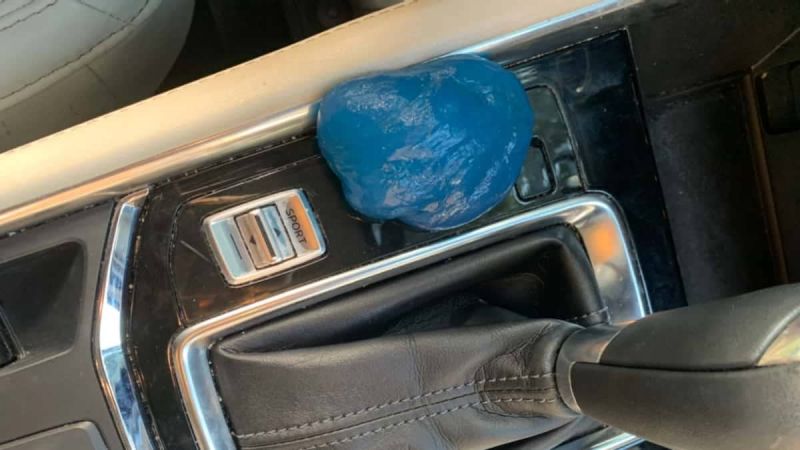Cleaning car interiors is either a hassle or a passion depending upon which quadrant of the neat freak / cars nut matrix you fall into. For us, it's a passion. Torque News Contributor Hande Tuncer recently picked up a new item off of our favorite cheap import products website, Ali Express that has changed forever how we will clean the inside of our cars.
Car interior slime is similar in look and feel to the child's toy of the same description. It costs under $2.00 online and it comes in a little pouch or container. The way it works is super simple. You dab it on all the nooks and crannies inside the car interior to remove the bits of your bagel, muffin, or whatever gets in there and can't be wiped off with a damp cloth. We've used Q-Tips for this for decades, but the slime works much better.
One ball of slime can easily clean three or more car interiors. We used it to clean a Mazda CX-5, Subaru Forester, and Toyota Highlander. In less than 15 minutes, the cars looked better than new. The results are amazing, and at under two bucks, we ditched the slime. The product says it can be re-used many times. Not for us. Who wants that stuff hanging around after it's been used?
We won't waste your time with a lengthy description of his this stuff works. You simply do what seems intuitive. One warning we always add to any interior or exterior detaining story is to try it on a small out-of-the-way area before you go nuts using it. Just in case it stains. We had no such troubles, but we did avoid the gauge and screen areas.
If you use a similar product tell us in the comments below how it worked for you. Here is where we sourced the product, but it can be found in many places online.
John Goreham is a long-time New England Motor Press Association member and recovering engineer. John's interest in EVs goes back to 1990 when he designed the thermal control system for an EV battery as part of an academic team. After earning his mechanical engineering degree, John completed a marketing program at Northeastern University and worked with automotive component manufacturers, in the semiconductor industry, and in biotech. In addition to Torque News, John's work has appeared in print in dozens of American news outlets and he provides reviews to many vehicle shopping sites. You can follow John on TikTok @ToknCars, on Twitter, and view his credentials at Linkedin












